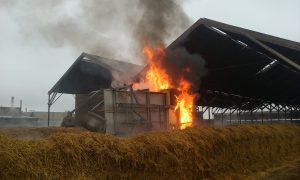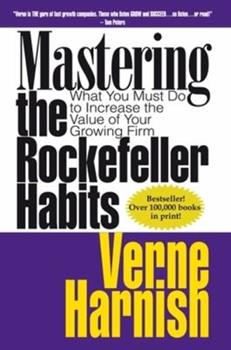A couple of months ago, one of our truck drivers, who makes deliveries to our customers, had a rough weekend and went AWOL. It started on Saturday morning when the driver called our assistant packing supervisor to tell him he had run into a parked van at one of his stops in Salt Lake City, Utah. He also said, “I quit!” The supervisor told him to bring the truck back to the farm, and we could talk about it when he got back, to which the driver agreed.
The supervisor called me after he got off the phone with the driver and told me about the situation. A short time later, I received a call from the owner of the damaged van to begin working on the insurance claim for repairs and a replacement vehicle until the vehicle was ready.
Fast forward to Sunday evening, about 10 pm, the packing supervisor called me and said the driver had not returned to the farm and he could not get a hold of him on his cell phone. He was at the County Sheriff’s office filing a missing person report. About an hour later, a deputy called me to get more information about the driver and the truck. I was anxious about him and wondered if I should travel to Salt Lake City to start looking for him that evening. The deputy said he would issue a statewide alert for the driver and hold off until the morning before deciding about going to look for him.
After a restless night, I went to the farm for our team huddle and discussed the issue with my team. After the huddle, I found the emergency contact phone numbers for the driver and made a call. The first number I called was for his mother, who was living in Idaho. She was crying when I called and said her son had just called her and told her he was “leaving the truck at the Salvation Army in Ogden, Utah.” He didn’t tell her where he was going or what happened, which upset her.
At this point, we knew the truck was in Ogden, and we needed to get it back to Fillmore. So, the packing supervisor and I hopped in my vehicle with the mission of retrieving the equipment. (The supervisor has a CDL, so he plans to drive the tractor and trailer back to the farm.) In the meantime, I received a call from our sales manager who called our customers all morning to see if they had seen our driver. One of our clients, located in Odgen, responded that the driver had been there that morning to make a delivery, but he didn’t have any mushrooms and was not scheduled to make a delivery.
We later found out that our driver who was expected to make the delivery to that customer saw the missing driver at this client’s dock, and he had blood on his face and was acting “crazy.”
“He was acting so crazy that I didn’t get out of my truck to talk to him and left as soon as I could,” said the other driver.
The deputy who had interviewed me the night prior called me to report that they had not found the driver but that the cell phone he had been using was reported stolen to the Salt Lake City Police. I gave him the new information and told him we were on our way to retrieve the tractor and trailer.
At this point, we located the truck, the driver’s cell phone had been reported stolen, and that the driver’s behavior was erratic, and he appeared to be disoriented. We also think he is still in the Ogden area.
We thought that’s what we knew. Shortly after that, the packing supervisor called the missing driver, who told him that he was moving the truck from the Salvation Army to the Flying J gas station on 21st Street and I-15 in Ogden. I then called the Weber County Police Department to report the incident and asked them to secure the truck until I got there. They called back 30 minutes later and said they could not find the truck and trailer at the gas station. I asked them to check the Salvation Army. They found the equipment at the Salvation Army, and they secured the vehicle until our arrival. Only now are we sure we have located the truck.
We make our way to the Salvation Army in Ogden, and as we pull up to the truck, I see the missing driver sitting in the truck?! I thought they had secured the vehicle? I pulled into a parking lot across the street and got out of the vehicle. He sees the packing supervisor and me and gets out of the truck to visit with us. As he approaches, we are standing in the parking lot, and he has a black leather jacket on with something under the jacket, which makes it stick out awkwardly.
I asked, “Are you okay? We’ve been trying to contact you for two days? What happened?”
He was agitated and pacing back-and-forth and from side-to-side about 3 or 4 paces, and he would not look at either of us. He said, “Sorry about this Dave, I know I screwed up here, but when this all settles down, I need to talk to you at the farm about this job.” My name is not Dave, and he was agitated. At this point, I felt like he was on drugs. I was concerned.
He went on to tell the story of his weekend. He describes how after he hit the parked van and called the supervisor to quit, he went to one of his friends in Salt Lake, as he put it, “to get a lady friend to watch him sleep.” Well, he got two ladies-of-the-night to join him that night at a hotel in downtown Salt Lake. He assured me he just wanted them to watch him sleep. But while he was asleep, they stole his cash, cell phone, and his last paycheck. The following day he took the truck to Ogden. He said he “needed to find a gun so he could take care of some stuff.” At his point, I immediately said, “Do you have a gun on you?” He avoided the question and went on. I repeated more firmly, “Do you have a gun?” He said, “no, I’m just talking smack.” (In his more colorful language.)
He went on to describe how he met “Pastor Dan,” who was helping him out. He pointed behind the trailer, and there was a man in a hoodie sitting in a car, watching our conversation. He was in the getaway car. I asked, “What church does “Pastor Dan” preach from?” He replied,”the Salvation Army church,” as he pointed to the building behind us.
At this point, I told him I needed to call the cops to bring us the key so we could take the truck back to the farm, and they needed to ask him some questions because of the missing person report we had filed. He argued with me for a minute about how he could see the cops, and then he turned and ran to the getaway car with “Pastor Dan” and drove off. The packing supervisor wrote down the license plate as I called the Weber County Police to report the vehicle information and details about the incident.
We then retrieved the key to the tractor, and the supervisor drove it home. As we inspected the tractor before the supervisor began the trip, we found the CB Radio was missing. I can only assume that is what the driver had under his jacket. Also, you may be asking, why was the driver sitting in the truck when we pulled up? The cops took the keys out when securing the vehicle, locked the doors, and left the windows down 4-5 inches. So, he was able to reach in and open the door.
Learning Experience
What did I learn from this experience? He mentioned when we saw him at the truck that he needed to talk to me about the job. I can infer from this comment that he was having some issues with his job. It’s clear to me he was having personal problems, as well, with the tale of sex, drugs, and guns over the wild weekend. What I gleaned from this is that my communication with this employee was not open enough to talk to me about the issues he was facing, both personally and professionally. I wish he would have told me before he went AWOL. You never know how you can influence someone with a thoughtful word or conversation.
The driver mentioned that he had been off-the-grid for seven years, meaning he had spent time in prison. He said, “for the past three years, I’ve had to bust my @$$ to stay out of prison.” My response was, “Why is that so hard? Just make good choices.” I don’t completely understand his background, and I wasn’t trying to pass judgment. But I do know this, who we are in this is a direct result of our choices. This experience reinforced this idea in my mind.




